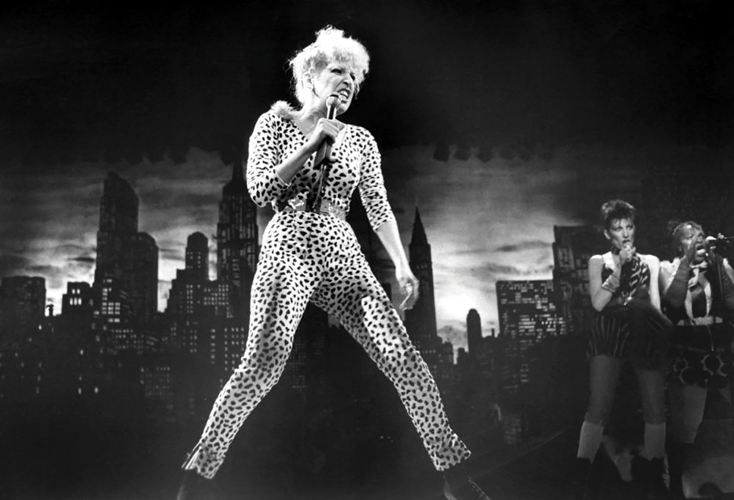
Divine Madness
I hope you’re doing as well as possible — and by that I mean I hope that the ongoing stress of the pandemic and our current political situations aren’t grinding you down. There are so many struggles going on, and at times it feels impossible to address them all without sounding disingenuous or opportunistic. So please just know that I hope these weekly guides to what’s out there and available to you serve as a safety valve, or one of those runaway truck paths you see on the side of a mountain, or an emotional Dairy Queen. The vibe of this week’s picks is a little less apocalyptic than last week’s; the outside world has more than enough of that to go around. Look back at the past 24 issues of the Scene for scores more recommendations of what to stream: March 26, April 2, April 9, April 16, April 23, April 30, May 7, May 14, May 21, May 28, June 4, June 11, June 18, June 25, July 2, July 9, July 16, July 23, July 30, Aug. 6, Aug. 13, Aug. 20, Aug. 27, Sept. 3, Sept. 10.
Divine Madness on TCM
The first great concert film of the ’80s, Divine Madness finds energetic dynamo Bette Midler holding court in Pasadena, Calif., and serving up everything an audience could want: torch songs (Ragovoy and Weiss’ “Stay With Me” with such intensity Midler nearly burns down the stage), rock numbers emanating from some extradimensional timespace (Springsteen, Nilsson, Dylan), dirty jokes, conceptual theater (including Midler’s lounge-singer/mermaid alter ego Delores DeLago), well-placed ballads that will knock you flat, and a commitment to providing as much entertainment as humanly possible. Director Michael Ritchie (The Bad News Bears, Smile, Fletch) did the work with the camera crew, and even though there are 10 units operating at any given moment, as a viewer you never see anything except the show, the audience and a diva working her ass off onstage. Midler may not be everyone’s cup of tea, but if you know her work from Beaches, Hocus Pocus, “From a Distance” or holding court on Twitter these days, take 94 minutes and familiarize yourself with Divine Madness. As a bonus, the complete theatrical version is streamable via TCM, including the two Tom Waits songs (“Shiver Me Timbers” and “Rainbow Sleeves”) that were removed from the VHS and DVD editions. And yes, that is dance-music doyenne Jocelyn Brown as one of Midler’s Staggering Harlettes.

The Velvet Vampire
The Velvet Vampire on Night Flight, Tubi and Amazon Prime Video
A magical anomaly even when it surfaced in theaters in 1971, The Velvet Vampire is a distinctive ride. Director/co-writer Stephanie Rothman (The Student Nurses, Terminal Island) made something that fit producer Roger Corman’s exploitation requirements (nudity, vampire violence) and understood the new wave of sensual European horror even as it tapped into a specifically American sense of unease and menace. Lee (Michael Blodgett from Beyond the Valley of the Dolls) and Susan (Sherry DeBoer of all the ’70s TV) are the most blonde and most beautiful couple at the chic gathering where they encounter Diane LeFanu (Celeste Yarnall of Star Trek, Knots Landing, Melrose Place). Diane is widow rich, brunette mysterious and captivated by the two, and before you know it, Susan and Lee are on their way to spend some time at Diane’s Palm Springs estate. There are complications with the car, as well as with the mysterious folk who live on the periphery of Diane’s home. Native American legends come into play, as do shared stories of corporate terror and miners’ maladies — to say nothing of the hypersymbolic dreams that afflict the subjects. But Diane is very charming and drives a dune buggy, so you can’t help but get swept up in her sway. The desert locations and unwinding hippie vibes give the film a singular texture, and Rothman knows how to deploy or subvert a cliché with deft timing. And then there’s a rightfully legendary sequence toward the end of the film that starts in a bus station and ends in the middle of the street in broad daylight that is jaw-dropping in its ambition and achievement. You will want to see more Stephanie Rothman films, and you absolutely should.

The New Mutants
The New Mutants at drive-ins, coming soon to Disney+ or Hulu
Bounced around for reshoots that apparently never happened and from release date to release date, The New Mutants for the longest time felt cursed to never come out — or perhaps it was some grand unstructured joke about comic book/superhero cinema. The sale of 20th Century Fox to Disney coupled with the COVID-19 pandemic seemed like just the latest escalations in a sad story about IP and the modern market — a cautionary tale for people too tapped into the current trends in global exhibition. But strangely enough, The New Mutants is neither a reshot quilt nor the disaster some might expect. Honestly, it’s the third-best X-Men universe film, and it’s genuinely saddening that this iteration of these characters has nowhere to go. To be fair, there are some big issues here: Co-creator Bob McLeod’s concerns and frustration (including misspelling his name) are well-documented and worth exploring, and like him, I don’t understand why exactly the Vietnamese original team member Karma was replaced by a for-some-reason-initially-racist incarnation of the Russian character Magik (Anya Taylor-Joy, from The Witch and the tonally similar Morgan).
Earlier I mentioned that it felt like this film might be cursed to never come out, and that sticks in the craw, because The New Mutants has one of the kindest, most evocative and sweet queer romances that mainstream cinema has given us in the past decade or so, which was not something I expected. But I’m a longtime fan of the series, and it brought me great joy (as does the presence of a certain puce-colored miniature dragon). It also at several moments brings to life the impressionist wonders and kinesthetic horrors of longtime New Mutants artist Bill Sienkiewicz (to this day the greatest comic book artist the medium has produced — see also Elektra: Assassin and the TV show Legion), who’s never afraid to tap into the preternaturally upsetting and visceral. If budget limitations cast that certain industrial pall/green-screen fatigue over the mysterious facility where our characters are stuck, the way the effects artists lean into the disconnect and let the suppressed horrors in the story seep out is somehow more effective. Ultimately, The New Mutants is a coming-of-age story in which the internal and biochemical struggles that plague us all are externalized into something grand and operatic, pulsing with eldritch fire, psionic blasts and bodies unbound by established tradition. It’s out in theaters currently, but we’re not recommending you go to movie theaters in this space. At the time of this writing, New Mutants is at some of the drive-ins around Middle Tennessee (I drove to the Montana Drive-In in Estill Springs to see it), and it will most likely surface on Disney+ or Hulu at some point soon. It’s worth your time when it does.







